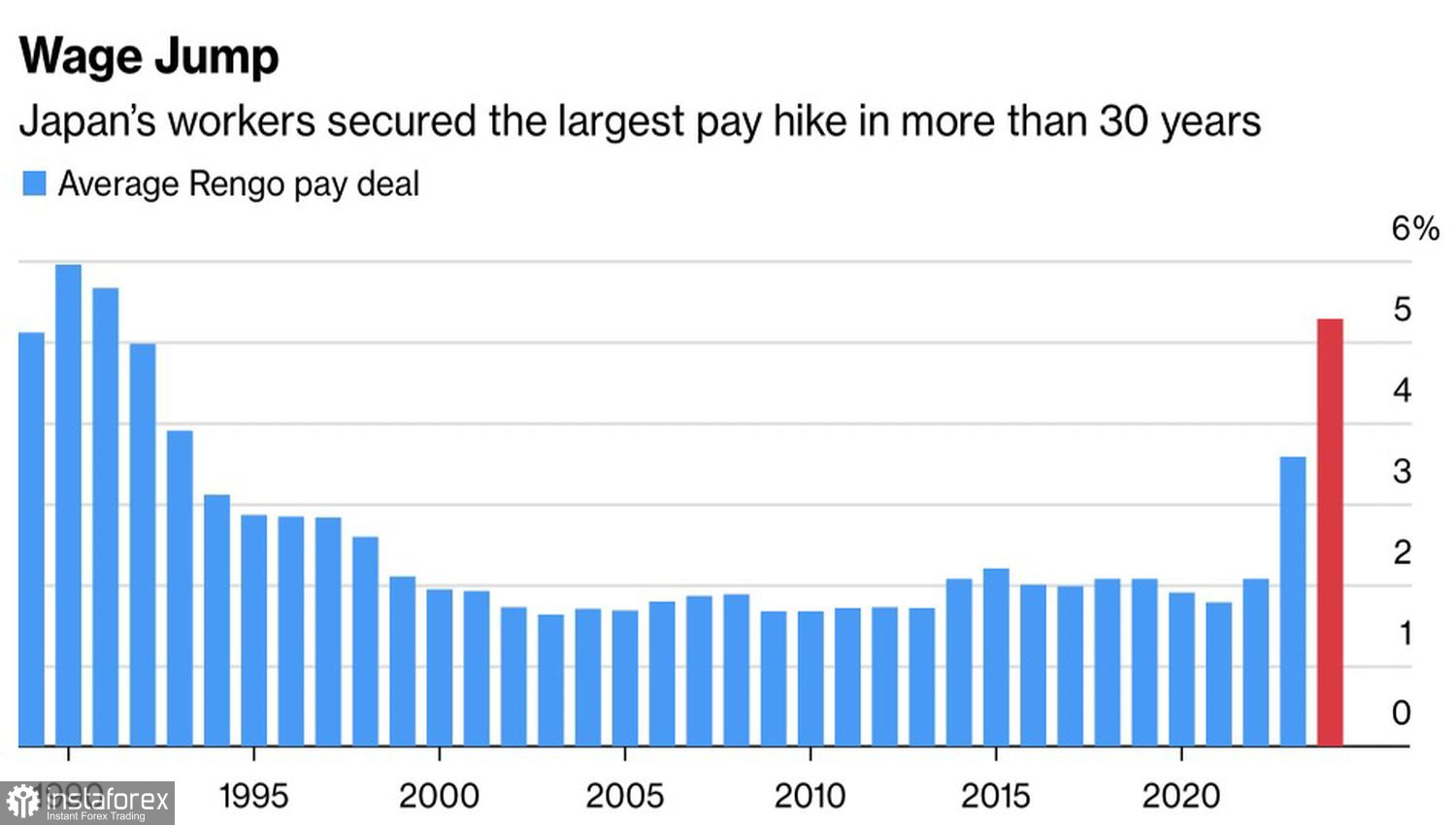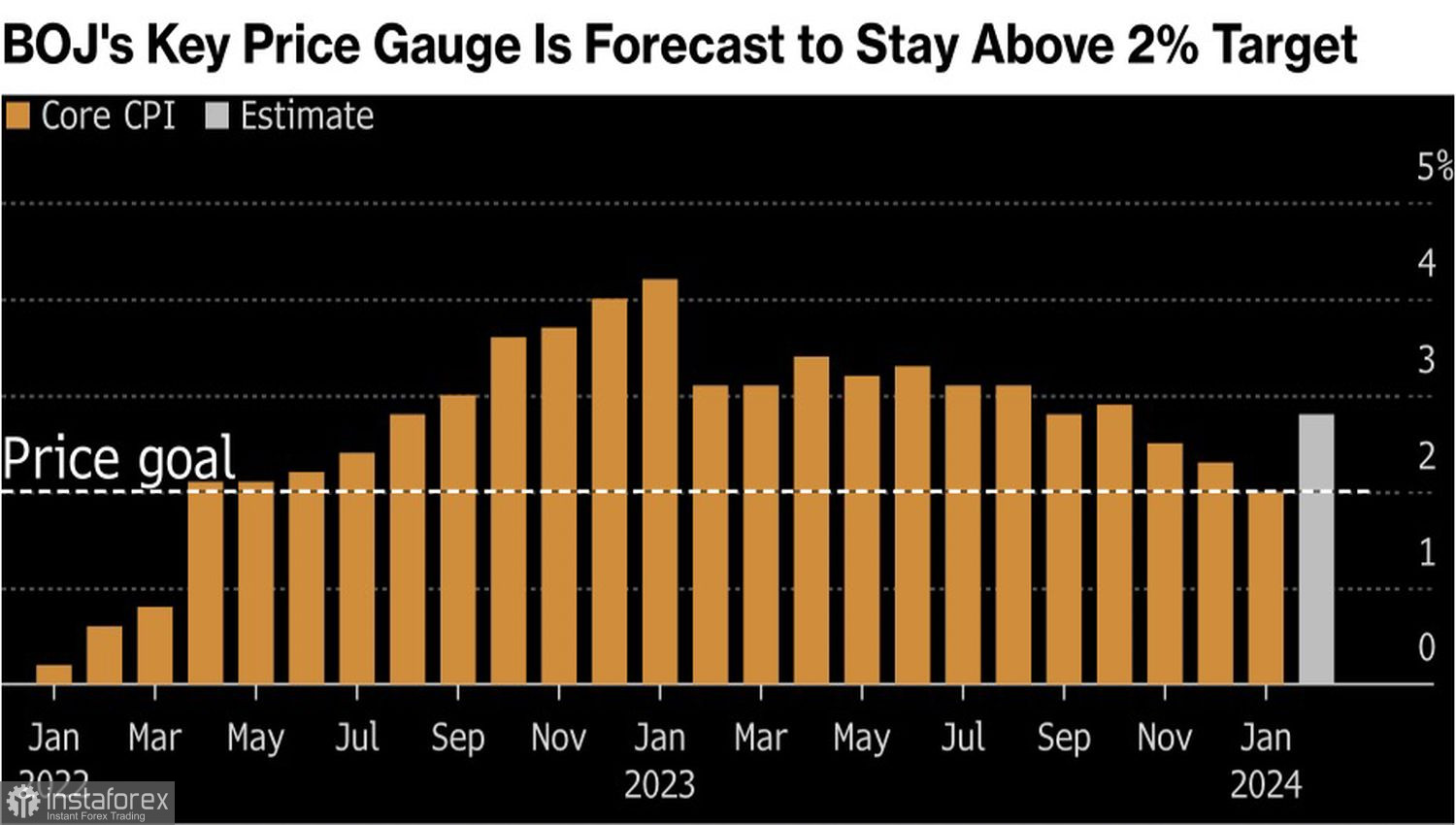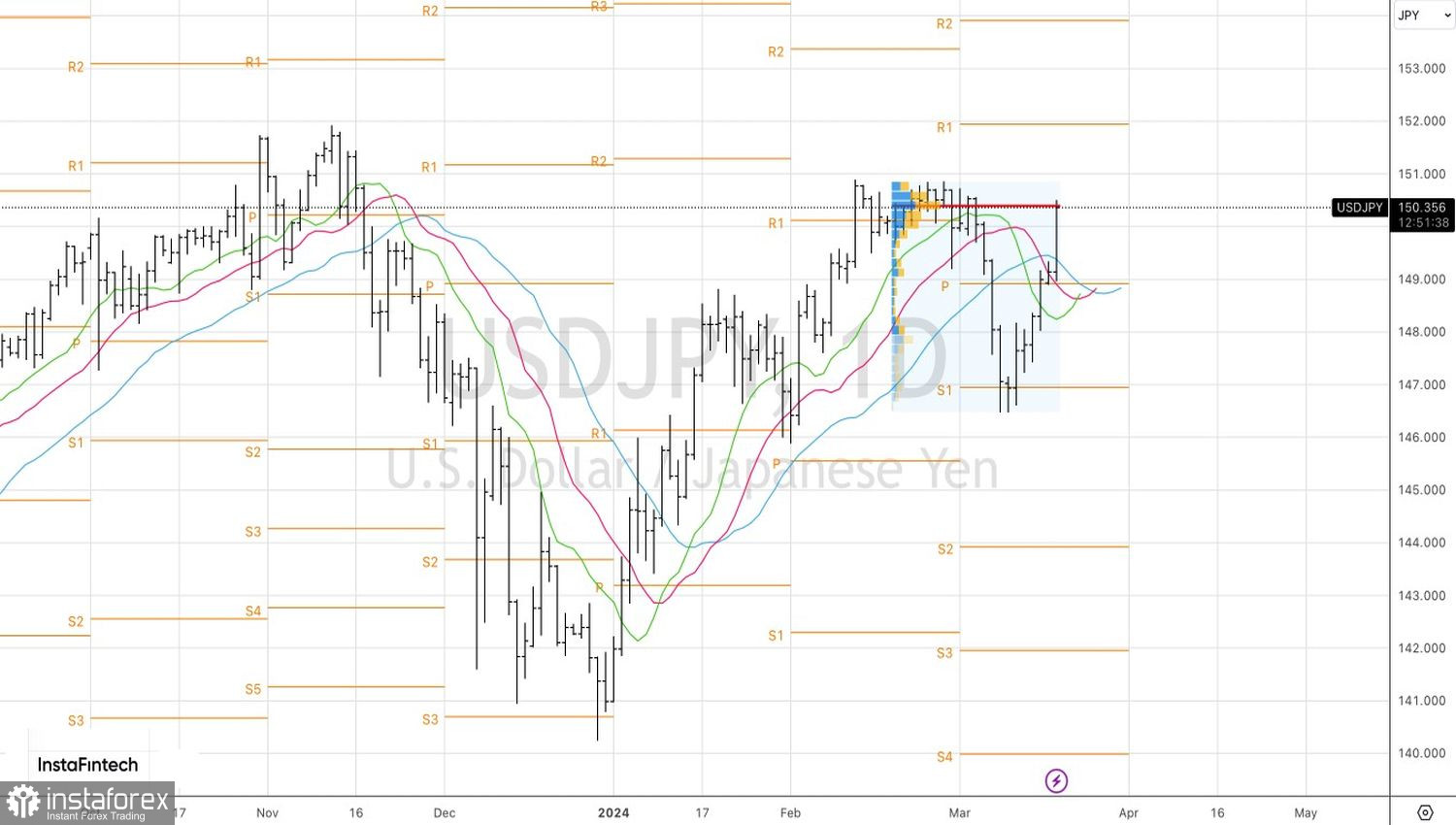All things come to an end sooner or later. Central banks' experiment with negative rates has come to an end. The Bank of Japan became the last one to abandon them. At its March meeting, it raised the overnight rate from -0.1% to 0%, announced the end of yield curve control, and ceased buying exchange-traded funds as part of its quantitative easing program. However, these events were largely priced in the USD/JPY quotes, which, combined with signals of maintaining an ultra-loose monetary policy, pushed the pair's quotes above 150.
After it became known that unions had agreed with companies on the largest wage increase in the past 33 years, 90% of Bloomberg surveyed experts began to predict the Bank of Japan's withdrawal from negative rates as early as March. The rhetoric of BoJ Governor Kazuo Ueda and the fact that only seven members of the Board of Governors voted for the rate hike allowed the USD/JPY bulls to launch a swift attack.
Dynamics of Wages in Japan

Ueda's statement that financial conditions remain accommodative convinced markets that the monetary tightening cycle would not be as swift as that of other central banks in 2021–2023. The Bank of Japan has shown that it is ready to measure seven times before cutting. It's easy to understand why: there are risks that inflation in Japan will slow down even further. In the face of policy dependence on data, the BoJ needs to exercise caution.
Similar thoughts arise when looking at the split in the votes of the Board of Governors: 7 against 2. Obviously, there are both "hawks" and "doves" there. The latter will surely oppose aggressive easing of monetary policy.
Inflation Dynamics in Japan

Tokyo's tortoise-paced move is accompanied by growing expectations that Washington will not rush with monetary expansion. The futures market sees a decrease in the federal funds rate to 4.7% in 2024. This is a smaller cut than indicated in the December FOMC forecast. Not surprisingly, against the backdrop of a resilient U.S. economy and two months of consecutive inflation pressure—in January and February.

The Federal Reserve is able to fuel the USD/JPY rally by raising the consensus estimate for the rate to 4.9% and higher. It implies not three acts of monetary expansion in 2024, but one less. If that's the case, U.S. stock indices will fall, Treasury yields will rise, and the dollar will strengthen against major world currencies. And the yen will be no exception.
Technically, on the daily chart of USD/JPY, a rapid breakthrough by the bulls of dynamic resistance in the form of moving averages and a return of quotes to fair value in moments indicate the seriousness of buyers' intentions. The further fate of the pair will depend on their ability to maintain the positions gained. Closing above 150.35 will increase the risks of continuing the upward campaign to 151.9 and 153.3. Conversely, a drop below the important level will be a reason to sell.
 English
English 
 Русский
Русский Bahasa Indonesia
Bahasa Indonesia Bahasa Malay
Bahasa Malay ไทย
ไทย Español
Español Deutsch
Deutsch Български
Български Français
Français Tiếng Việt
Tiếng Việt 中文
中文 বাংলা
বাংলা हिन्दी
हिन्दी Čeština
Čeština Українська
Українська Română
Română

